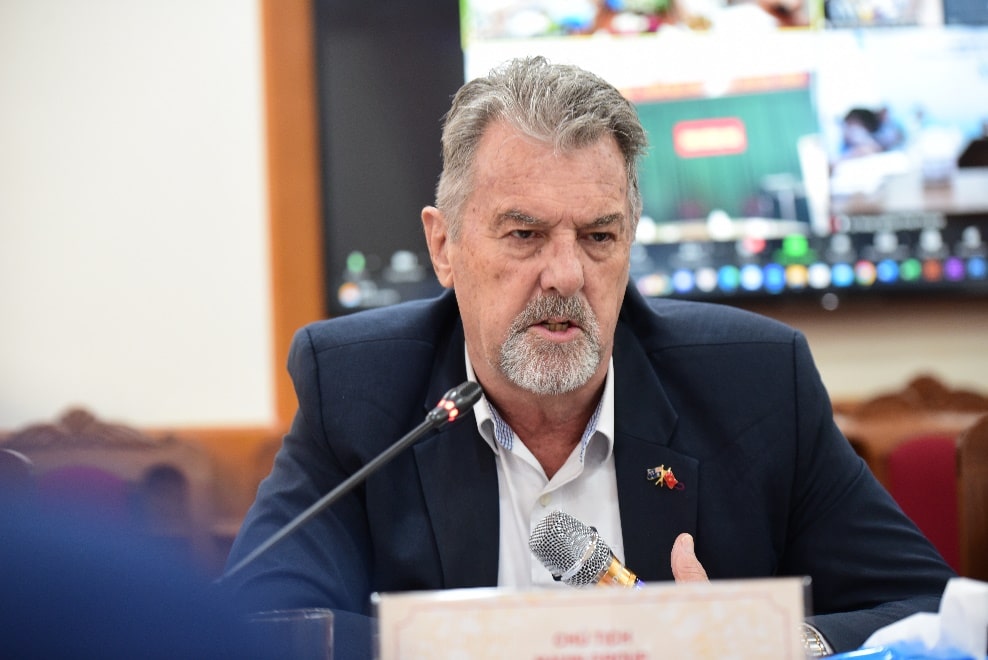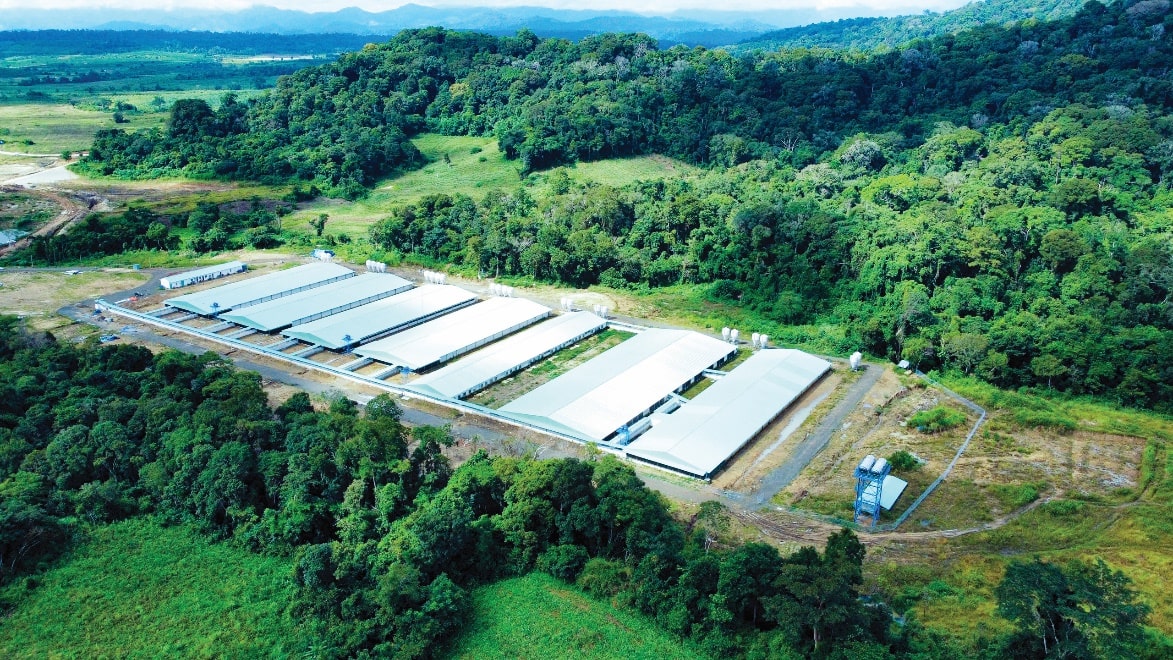
President Mavin spoke at the Forum "Circular economy in the livestock industry".
Participating in the Forum "Circular economy in the livestock industry: Opportunities and challenges" held on March 21, 2023, Mr. David John Whitehead, Chairman of Mavin shared about the trend of circular economy development in livestock and Mavin's ambitious plans in this field.
Not only limited to smallholder farmers
Mr. David John Whitehead said that today, we hear a lot about terms such as: linear agriculture, circular economy, circular agriculture, sustainable agriculture, precision agriculture... In particular, circular agriculture aims to conserve biological resources, considering waste from food processing as reusable resources, through which the purposes can be achieved:
- Waste recycling;
- Lowest usage level of external supply;
- Minimize factors harmful to the environment.
Circular agriculture focuses on the minimal use of external inputs, closing the cycle including: nutrition, soil regeneration and minimizing impacts on the environment. Circular agriculture also reduces the use of resources and the ecological footprint of agriculture and reduces land use, chemical fertilizers and waste, which helps reduce CO2 emissions to the environment. In a circular economy, reuse and recycling are part of the production process.
Circular agriculture is not a new concept and was widely practiced by pre-industrial societies in subsistence farming, mixed farming using livestock waste and crop by-products as fertilizer. This concept is of little interest in modern large-scale farming, as modern farming is often primarily focused on maximizing profits rather than protecting the environment.
Therefore, in the past, the business model of large-scale, intensive agricultural companies was often considered unsuitable for circular agriculture. Circular agriculture is more common in smallholder farming, associated with organic, mixed and agroforestry farming practices.
However, according to Mr. David John Whitehead, the awareness of circular agriculture is changing globally, in Vietnam, the Government is now calling on localities and businesses to join hands and take initiatives to promote circular agriculture. On the one hand, we have recognized the importance and contribution of circular agriculture in smallholder farmers in recent years. On the other hand, we have also started to encourage the development of large-scale and industrial farms, in order to reduce pollution, save energy, increase production efficiency, towards producing quality products, traceability, export standards, and good disease control.

A large-scale livestock farm complex in Gia Lai of Mavin applies circular agriculture model
Development trends
According to Mr. David John Whitehead, in fact, large-scale livestock farms as well as smallholder farmers can apply the circular economy model when strictly following the 3R principles: Reduce-Recycle-Reuse. Namely:
- Reduce costs, loss, waste, animal feed and natural resources such as water and energy;
- Recycling waste by creating fertilizer;
- Reuse soil by treating crop by-products into compost, reusing agricultural products in animal feed processing,...
Thanks to these principles, circular agriculture will contribute to better health and nutrition, and also employ more labor than traditional farming, helping to boost the rural economy. The application of circular agriculture also contributes significantly to poverty reduction and food security, creating new job opportunities, especially for rural women.
Circular agriculture is particularly significant in developing countries such as Viet Nam, where women account for 48 per cent of agricultural employment and have more restrictions than men on access to productive resources and services, technology, etc market and financial information.
The basis of the circular economy in agriculture is to bring sustainability and ecological balance. At the same time, besides the environmental aspect, social concerns and consumer health play an increasingly important role in the current trend of circular agriculture development.
In particular, circular agriculture is no longer confined to smallholder farmers but has recognized and appreciated the role of the private sector in promoting circular agriculture in Vietnam.
Mavin and the trend of applying circular agriculture models
Mr. David John Whitehead affirmed: Responding to the Government's call to develop circular agriculture, at Mavin, we have been applying the principles of circular economy. Specifically, we have invested in large-scale pig breeding complexes such as huge farms in Nghe An, Gia Lai and Dong Thap... These livestock complexes strictly establish biological barriers and biohazard management systems to control disease well. Mavin also applies high technology and digital transformation platforms in the fields of:
"Mavin's goal is to keep carbon emissions and environmental impacts to a minimum. With the development of these livestock complexes and the help of circular agriculture, by 2025, we aim to produce 1 million piglets per year from all Mavin farms in Vietnam," said David John Whitehead, Chairman of Mavin Group.
Original article at: Mavin đẩy mạnh ứng dụng công nghệ cao trong phát triển mô hình nông nghiệp tuần hoàn (danviet.vn)